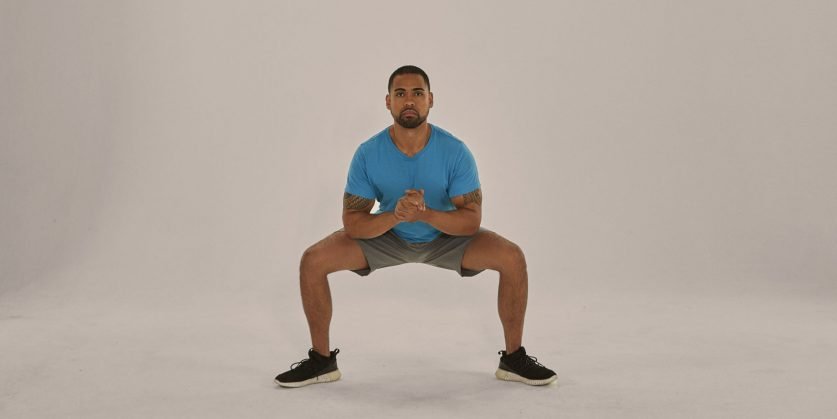Get Stronger Legs with the Dumbbell Sumo Squat
Sitting back into a sumo squat with dumbbell on your hips can help you strengthen your entire lower body, especially your quadriceps, glutes, and hamstrings. In this guide to the dumbbell sumo squat, you’ll learn how to execute the exercise properly in order to maximize the benefits that come from it and to minimize the risks of injury.
The Benefits of the Dumbbell Sumo Squat
Let’s not be coy here. When you sumo squat with a dumbbell, you’re working your quads and glutes. A lot of people would be satisfied ending it there, but don’t forget that all of your hip extensors and core are also at work to support proper form when sumo squatting. So yes, if your goal is to have nice legs, then go right ahead and do tons of dumbbell sumo squats!
Key Points For Better Form
If you’re going to do a db sumo squat, it’s crucial that you build a solid foundation of strength beforehand. Once you can do 25 traditional squats—or other variations, like bodyweight squats—with good form, it will be easier to perform a sumo variation. So many people make the mistake of starting out by using too much weight and neglecting their form. This can result in muscle imbalances and even injury down the road.
How Often Should I Do This Exercise?
Three times a week should do it. When you first start out, you may have to go lighter than normal and work your way up to heavier weights. The most important thing is to listen to your body, and only push yourself so far as your fitness level will allow. Pay attention to any pain in your lower back or knees, and ease off if those areas feel tight or strained at all. If you're having trouble keeping balance when performing sumo squats, try it on a slightly softer surface like carpeting or grass. A great beginner exercise for building lower-body strength is pile squats—also known as Bulgarian split squats—where one foot is placed on top of a weight bench or sturdy chair while you perform squats from that elevated position.
Other Exercises To Try With The Sumo Squat
Although it’s easiest to perform them without weight, there are several ways to increase resistance during a sumo squat. To build up your legs and burn more calories, try these two variations: Pile squats. When you perform regular squats using weights that are in front of your body instead of on your back or shoulders, you have pile squats—also known as Zercher squats . Because you hold onto weights near your chest, it makes it harder for you to extend your arms and rise out of a squat position. The added difficulty causes more muscle fibers to work harder and stimulates more growth in your glutes, quads, hamstrings and calves. Sumo squat with dumbbells.


